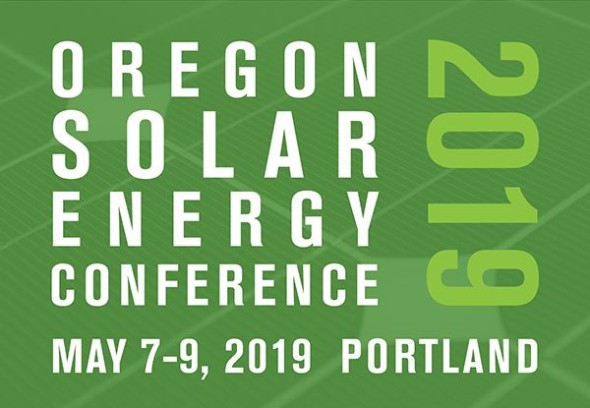Microgrids Discussion a Stand-Out at Oregon Solar Energy Conference
Posted on May 16, 2019 by Sudeshna Pal
Tags, Energy, Conference & Events

Another year, another great Oregon Solar Energy Conference. CUB is pleased to be an ally to the Oregon Solar Energy Industries Association, host of this annual event that pulls together solar industry resources for a wide range of sessions. This year, the session that caught our eye was on the topic of microgrids.
Oregon Department of Energy’s Biennial Energy Report 2018 provides a good description of microgrids. A microgrid is an interconnection of loads and distributed energy resources (DERs) that is able to operate as a single controllable entity independent of the larger electric grid. The microgrid can connect to or disconnect from the grid and, hence, operate in both grid-connected or island-mode. The ability of the microgrid to “island” itself from the main grid is its key distinguishing feature. The size of a microgrid ranges from a single home or building to an entire campus or even a city. Improving energy efficiency in order to reduce energy demand for the microgrid is the first step toward designing such a system. A microgrid can be set up using any energy technology or a combination of technologies. For instance, diesel generators combined with solar and storage would increase the efficiency of the microgrids. Several utilities are initiating microgrid projects, some of which were discussed at the conference.
Why are utilities building these microgrids? Are they worth paying for from the point of view of the utility customers? The panel provided a platform for dynamic interaction between the utilities and the audience on some of these topics.
The need for a microgrid stems from the need for a resilient energy system. A resilient energy system is one that is able “to withstand and restore energy delivery rapidly following non-routine disruptions of severe impact or duration” (Oregon Department of Energy (ODOE)). Threats to Oregon’s energy system include a Cascadia Subduction Zone earthquake, cyber and physical attacks, and climate change. In response to an increased awareness of these threats, several entities, including utilities and local governments across Oregon, have been starting to take steps to create a more resilient energy system. Microgrids are deemed to be effective resilience tools at the community level given recent advances in distributed energy resources (e.g. distributed solar and batteries).
Panelists from ODOE, Eugene Water and Electric Board (EWEB), the Energy Trust of Oregon (ETO), and Electric Capital Management (ECM) presented at the session on microgrids. Apart from spreading awareness on resiliency and the role of microgrids in enhancing it, they also informed the audience about specific microgrid projects across the state of Oregon.
ETO and Portland General Electric, for instance, are involved in a microgrid project jointly with the City of Portland’s Fire Station 1 through its Renewable Development Fund grant program. This microgrid project combines solar and storage to enhance resiliency of the fire station following a grid disruption. The equipment will be installed by the end of this year, and includes a 30 kW of rooftop solar and 120 kWh of battery bank in the basement integrated with the microgrid.
EWEB has a demonstration project on microgrids including battery storage. The project involves installing an energy storage system of at least 500 kW. The project must run connected to the distribution grid for at least a year. EWEB identified several limitations of the microgrid project including issues with self-starting, the inability to charge batteries with solar while islanding, high costs of controllers, and others.
Finally, ECM discussed their pilot projects integrating resilience and DERs, based on the Hood River County Energy Plan of enhancing community resilience through microgrids. The organization has conducted baseline assessments, identified critical facilities, and developed a comprehensive energy system map and distributed renewables deployment strategy.
The session was illuminating regarding Oregon’s preparation for a more resilient energy system. Microgrids can act as shields against imminent threats to the electric grid. Questions remain, though, about the extent to which utility consumers should be paying for these investments. Microgrid projects can be expensive, and they would be more cost effective if they added value to the electric system even when no immediate threats exist. Some examples pointed out at the session were those of Massachusetts and New York, where microgrids are being used to reduce congestion at the grid level. Microgrids could also be applied to events like the one in Oregon’s Douglas County earlier this spring, where electrical outage after a storm lasted for more than a month.
To keep up with CUB, like us on Facebook and follow us on Twitter!




05/16/19 | 0 Comments | Microgrids Discussion a Stand-Out at Oregon Solar Energy Conference